Sixty Four Pixels Noodlebox 4-part CV/Gate and MIDI desktop Serendipity Sequencer
The Noodlebox from Sixty Four Pixels offers 4 channels of CV/Gate and MIDI sequencing in a neat desktop box with a huge LED matrix screen that revels in accidental and hopefully happy accidents.
Noodlebox
Now, this looks like a load of fun. Jason Hotchkiss of Brighton based Sixty Four Pixels says that he was inspired by playing around with a couple of Korg SQ-1 sequencers and how you could get them to interact in interesting ways. Through experimenting with different sequence lengths, combining pitches, swapping gates and the general messing about with sequenced voltage all sorts of unexpected melodies and rhythms emerged. And it’s that sense of experimentation, live interaction and happy accidents that he’s attempted to maximise in the Noodlebox.
So, inside this box of tricks you get 4 independent sequencer layers with its own step count and clock division running to their own CV/Gate output. Each layer can have up to 128 steps which are normally split into 4 patterns of 32 steps which they call pages. Essentially 32 steps is what you can fit on the screen and you can swap between the 4 pages to swap between patterns. You can cue up lists of up to 32 pages for running songs and you can save up to 8 sessions that include all 4 layers.
Steps
Each step is quantised to a selected scale for pitch CV (V/Oct or Hz/Oct) or if using modulation then the range is 0-8v. Values between points can be interpolated for quick creation of modulation slopes and melodies and you can introduce voltage slew between points.
Gates
Gates are a separate thing and you can experiment with rhythms and gate lengths independently from the melody. A Euclidean algorithm can put in gates for you and each point can have probability, ratchet and accent attached to it.
Cross modulation
The serendipity bit comes in when you start adding the other layers. You can be boring and just do more independent sequencing or you can start to internally modulate one layer with another like you could with a couple of Eurorack sequencers. So layer 2 could be running at a quarter of the speed of layer 1 and you could use it to add voltage to the layer 1 melody effectively transposing the sequence every bar. It can get a lot crazier and more accidental than that in combining CV, modulating modulations and microtonalling your pitches!
MIDI
Then you can do it all again with MIDI. Each layer can have its own MIDI channel and CC numbers assigned to modulations. You can record in from a MIDI keyboard and effectively use Noodlebox as a MIDI looper.
Indiegogo
Noodlebox is up on Indiegogo and you can secure yourself one for July for £302. It’s a wonderfully engaging sequencer with a fabulous display and a focused feature set. It’s not too flashy or complex but can produce very creative and dynamic results. Jason mentions how he decided not to stick it in a Eurorack format so that it can find itself useful in far more places and I think that works in its favour.
More information
Video
You are currently viewing a placeholder content from YouTube. To access the actual content, click the button below. Please note that doing so will share data with third-party providers.
One response to “Sixty Four Pixels Noodlebox 4-part CV/Gate and MIDI desktop Serendipity Sequencer”

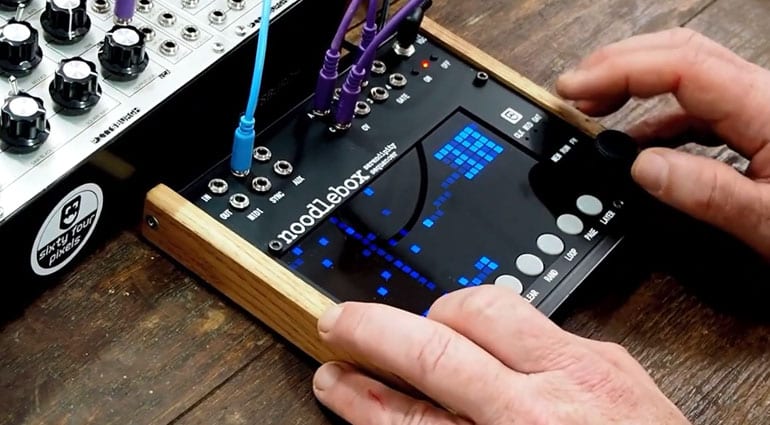


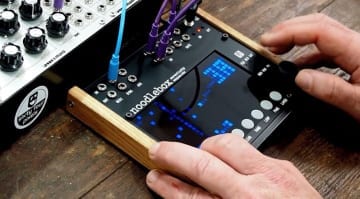


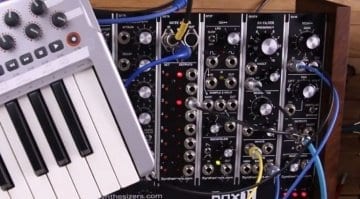
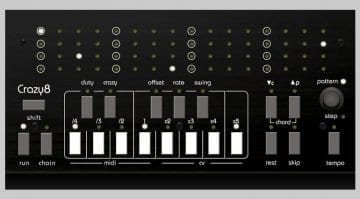
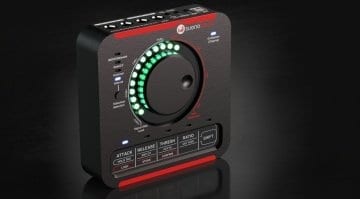
Well this is the sequencer I have been looking for in lightsaber blue lighting!